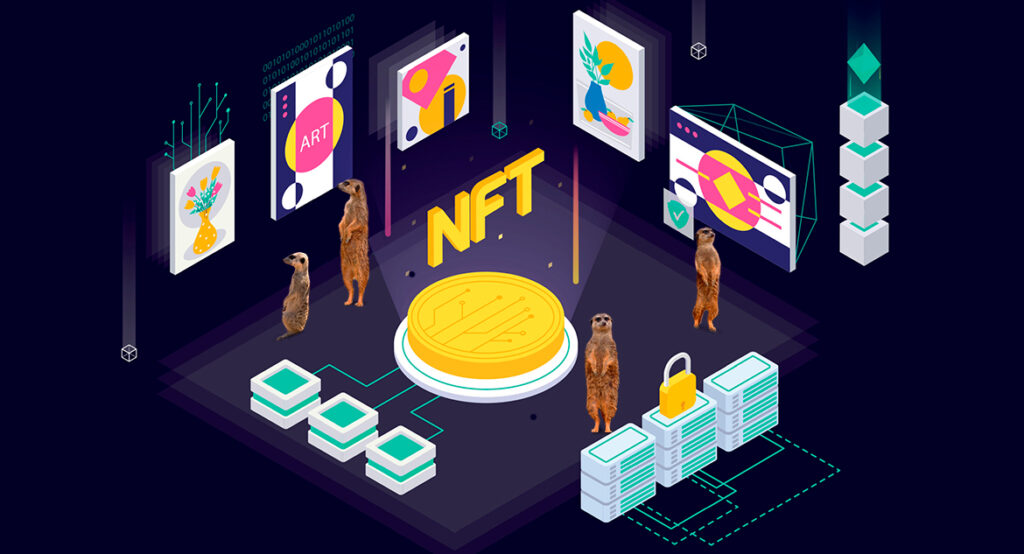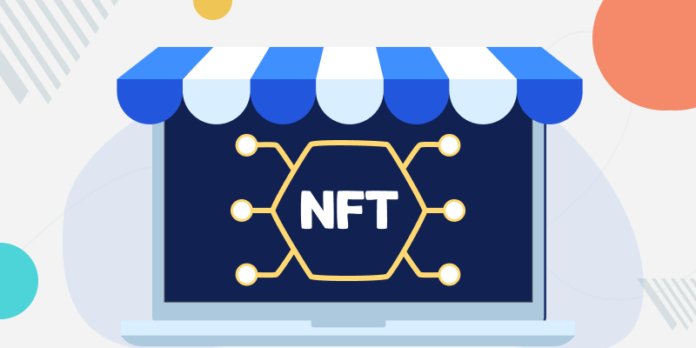Introduction to NFT Marketplaces
Non-fungible tokens (NFTs) have rapidly transformed the way digital art, collectibles, and other assets are bought and sold online. The core infrastructure for buying, selling, and trading NFTs lies within NFT marketplaces. These digital platforms allow creators to mint (create), list, and sell their NFTs while giving buyers a place to purchase and own unique digital assets.
In this article, we will explore what NFT marketplaces are, how they work, the different types of NFT marketplaces available, and some of the most popular platforms in the market today.

What Are NFT Marketplaces?
An NFT marketplace is a digital platform where users can buy, sell, and trade NFTs. These marketplaces act as online stores for NFTs, facilitating the exchange of digital ownership between buyers and sellers. Each marketplace is typically associated with one or more blockchain networks, such as Ethereum, Solana, or Tezos, where the NFTs are created and stored.
Most NFT marketplaces provide tools to create (mint) NFTs, manage collections, and allow for the buying and selling of NFTs through bidding or fixed-price listings.
Key Features of NFT Marketplaces:
- Minting: A process where creators can upload and turn their digital assets into NFTs.
- Bidding and Sales: Marketplaces support auction-based sales or fixed-price listings for NFTs.
- Royalties: Many platforms allow creators to earn royalties whenever their NFTs are resold on the marketplace.
- Wallet Integration: Users connect their cryptocurrency wallets to the platform, making it easy to purchase or list NFTs.
- Search and Filter: Most NFT marketplaces offer search tools to find specific NFTs based on categories, price ranges, and popularity.
Types of NFT Marketplaces
There are different types of NFT marketplaces, catering to various needs and interests in the NFT ecosystem. Some focus on specific niches like digital art or virtual goods, while others are more general, offering a wide range of NFT categories.
1. General NFT Marketplaces
These platforms support a wide variety of NFT types, including art, music, collectibles, domain names, virtual real estate, and more. They tend to have larger user bases and higher liquidity, making them a great place for creators and buyers to interact.
Popular General Marketplaces:
- OpenSea: Arguably the largest and most popular NFT marketplace. OpenSea supports multiple blockchains, including Ethereum, Polygon, and Klaytn, and offers a vast array of digital assets ranging from art and collectibles to virtual worlds.
- Rarible: A decentralized marketplace that allows users to create, buy, and sell NFTs. Rarible also has a community governance model where users can vote on platform decisions.
- SuperRare: A high-end marketplace for exclusive digital art, where artists are selected through a curation process. The platform is known for selling unique, one-of-a-kind digital artworks.
- Foundation: A platform focused on digital art, designed to be an invite-only community for artists and collectors. Foundation emphasizes high-quality, exclusive art pieces and gives artists more control over their work.
2. NFT Marketplaces for Digital Art
Some platforms specialize in tokenizing digital artwork, offering artists an exclusive space to mint and sell their work. These marketplaces typically provide features that help promote and protect the creator’s intellectual property.
Popular Art-Focused Marketplaces:
- KnownOrigin: A curated marketplace for high-quality digital art. KnownOrigin focuses on offering rare and unique works by both established and emerging artists.
- MakersPlace: A platform for creators to sell digital art and collectibles. MakersPlace is known for providing artists with a secure and transparent environment to sell their work as NFTs.
- Async Art: A marketplace that focuses on programmable art, where collectors can change certain aspects of the artwork after purchase. This unique aspect makes Async Art stand out in the digital art space.
3. NFT Marketplaces for Collectibles
NFT marketplaces for collectibles often focus on digital trading cards, virtual pets, and game-related items. These platforms attract collectors who are interested in owning and trading rare digital assets.
Popular Collectible Marketplaces:
- NBA Top Shot: A blockchain-based platform for buying, selling, and trading officially licensed NBA digital collectibles. Each collectible is a highlight from an NBA game, minted as an NFT.
- CryptoPunks: One of the earliest and most iconic NFT collectibles. CryptoPunks are a series of 10,000 unique 24×24 pixel art characters, each represented as an NFT.
- Axie Marketplace: A marketplace for Axie Infinity, a play-to-earn game where users can buy, sell, and breed Axies—digital pets that are also NFTs.
4. NFT Marketplaces for Virtual Worlds and Metaverses
Some NFT marketplaces are designed for virtual worlds, where users can buy, sell, and trade virtual land, avatars, clothing, and other items for their in-game characters.
Popular Virtual World Marketplaces:
- Decentraland Marketplace: A marketplace within Decentraland, a virtual reality platform built on the Ethereum blockchain. Users can buy, sell, and trade virtual real estate and assets in the metaverse.
- The Sandbox Marketplace: A virtual world where users can create, buy, sell, and monetize virtual assets. The platform allows users to create their own land and experiences, all tokenized as NFTs.
- Somnium Space: A virtual reality platform where users can buy, sell, and create virtual real estate, avatars, and items.
5. Specialized NFT Marketplaces
These platforms focus on specific types of NFTs, such as music, virtual goods, or domain names. They cater to niche communities where certain types of assets are traded.
Popular Specialized Marketplaces:
- Audius: A decentralized music streaming platform that allows musicians to mint and sell their music as NFTs, providing them with more control over distribution and royalties.
- Unstoppable Domains: A platform for buying and selling blockchain-based domain names as NFTs. These domain names can be used for cryptocurrency wallets, decentralized websites, and more.
- Zora: A marketplace that focuses on creating a decentralized platform for creators to mint and sell various types of digital assets, including music, art, and video.
How Do NFT Marketplaces Work?
The basic functioning of an NFT marketplace follows a similar process across most platforms. Here’s an overview of the general workflow:
1. Creating an Account
To start using an NFT marketplace, you’ll need to create an account and connect your cryptocurrency wallet. Popular wallet options include MetaMask, Trust Wallet, Coinbase Wallet, and others. These wallets store the cryptocurrency required to pay for minting fees and handle the transactions for buying and selling NFTs.
2. Minting NFTs
Minting is the process of turning a digital file into an NFT on a blockchain. Most NFT marketplaces allow users to mint NFTs directly from their platform. To mint an NFT, creators upload their digital file (art, music, etc.), fill in details like title and description, and set their royalty preferences.
3. Listing NFTs for Sale
After minting, creators can list their NFTs for sale on the marketplace. You can choose to sell them at a fixed price or through an auction. Auctions are popular for rare or highly anticipated items, where buyers can place bids to acquire the NFT.
4. Buying NFTs
Buyers can browse through the marketplace, discover new NFTs, and make purchases using cryptocurrency. Depending on the platform, buyers can pay with Ethereum, Solana, or other digital currencies. Some platforms also accept fiat currency via third-party payment processors.
5. Royalties and Resale
Many NFT marketplaces allow creators to earn royalties whenever their NFTs are resold on the platform. This ensures that creators can continue earning from their work long after the initial sale. Royalties are typically a percentage of the resale price and are automatically paid to the creator.
Fees on NFT Marketplaces
Fees vary depending on the platform, blockchain, and type of transaction. Common fees include:
- Minting Fees: The cost to create an NFT, also known as “gas fees.” These fees can vary significantly depending on the blockchain network (e.g., Ethereum gas fees can be expensive).
- Listing Fees: Some marketplaces charge a fee to list NFTs for sale.
- Transaction Fees: Marketplaces generally take a percentage of the sale price as a commission (typically 2.5% to 10%).
- Royalty Fees: As a creator, you can set a royalty percentage that you’ll receive on future resales of your NFT (usually between 5% to 10%).
Popular NFT Marketplaces
Here are some of the most well-known NFT marketplaces:
- OpenSea: The largest and most popular NFT marketplace, supporting multiple blockchains (Ethereum, Polygon, Klaytn).
- Rarible: A decentralized NFT marketplace that allows anyone to create, buy, and sell NFTs.
- SuperRare: A curated digital art marketplace for unique, one-of-a-kind works of art.
- Foundation: A platform for creators and collectors of high-end digital art.
- Zora: A decentralized platform for creating and selling NFTs, with a focus on cultural and creative assets.
Conclusion
NFT marketplaces have become a cornerstone of the digital asset economy, enabling creators and collectors to connect and exchange unique digital assets. Whether you’re a digital artist looking to sell your work, a gamer wanting to trade virtual assets, or a collector interested in rare digital items, NFT marketplaces offer diverse options for buying, selling, and showcasing NFTs.


